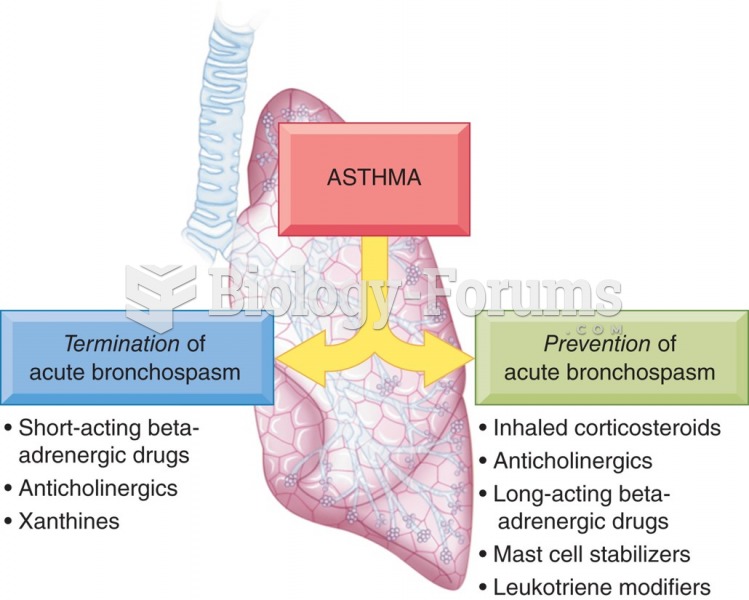|
|
|
In 1864, the first barbiturate (barbituric acid) was synthesized.
The calories found in one piece of cherry cheesecake could light a 60-watt light bulb for 1.5 hours.
Prostaglandins were first isolated from human semen in Sweden in the 1930s. They were so named because the researcher thought that they came from the prostate gland. In fact, prostaglandins exist and are synthesized in almost every cell of the body.
Bisphosphonates were first developed in the nineteenth century. They were first investigated for use in disorders of bone metabolism in the 1960s. They are now used clinically for the treatment of osteoporosis, Paget's disease, bone metastasis, multiple myeloma, and other conditions that feature bone fragility.
There are more sensory neurons in the tongue than in any other part of the body.
 Crossing over during meiosis leads to allele combinations in sex cells that are not present in the p
Crossing over during meiosis leads to allele combinations in sex cells that are not present in the p
 (a) In nondisjunction in meiosis I, one pair of chromosomes fails to separate properly at anaphase I
(a) In nondisjunction in meiosis I, one pair of chromosomes fails to separate properly at anaphase I





